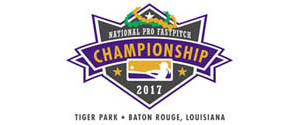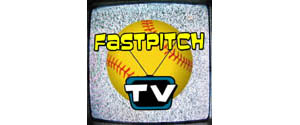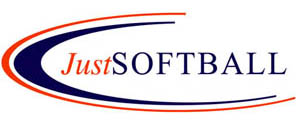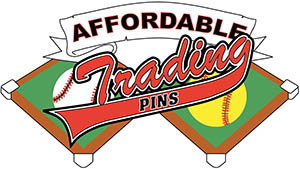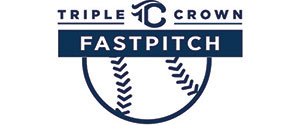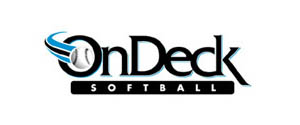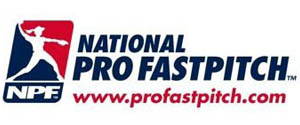RBI,
you say by your soph year in HS, which means a 1st year 16u player for the most part. I dont disagree with this. But for 12-14u, there is no need to be playing up... unless you are on a dominant team that moves up together.
They need to change that age cutoff back, this will make SR in HS be 2nd year players for 18g... the way it used to be.
NorCal
If you talk to ANY well respected college coach they will flat out tell you that by your Sophomore year (regardless of your age), if you plan on playing high level D-1 softball you better get on a 18 Gold team that plays the best. They want you facing the best pitching at the highest level, and not just hitting off 14U/16U pitching. You will be facing girls that you will see later on in college and not so in "awe" when you do. Confidence is one thing you bet, but they also want to see how you handle failure, as you wont be hitting .600 off the best in 18G or D-1. If you continue to play down you will be in for a rude awakening if you plan on playing at a top 20 softball school. Not my opinion but what I have been told by MANY.....
I agree for the "high level" teams but the high percentage of players don't or won't play on a top 10 team. If a player takes care of biz and does their work and they are good, good thing will happen no matter who they play for or against.
Last edited by lv2earat8 on Thu Dec 23, 2010 3:52 pm, edited 1 time in total.
God is great,beer is good,people are CRAZY!
-

lv2earat8 - Posts: 119
- Joined: Fri Jun 13, 2008 1:05 pm
By the way, there are a heck of a lot of GREAT schools who do not have a top 20 softball team.
God is great,beer is good,people are CRAZY!
-

lv2earat8 - Posts: 119
- Joined: Fri Jun 13, 2008 1:05 pm
lv2earat8 wrote:By the way, there are a heck of a lot of GREAT schools who do not have a top 20 softball team.
Oh, I totally agree! There are a TON of excellent schools that have homes for the hard working kid.
- rbi
- Premium Member

- Posts: 565
- Joined: Mon Mar 24, 2008 12:30 pm
Iluvblue wrote:RBI,
you say by your soph year in HS, which means a 1st year 16u player for the most part. I dont disagree with this. But for 12-14u, there is no need to be playing up... unless you are on a dominant team that moves up together.
They need to change that age cutoff back, this will make SR in HS be 2nd year players for 18g... the way it used to be.
Well ILB..you have me curious to want to ask your opinion on the subject (since you brought it up)..
What do you think about playing up to play more competive teams/compitition localy rather then having to play in socal alot in order to get the same competion level staying down..a '98 who has her 2nd year of 12u eligablity left playing up (14u) due to the thinning of the talent pool from alot of teams in the 12u division this year..for example.
-

mr.flamboyant - Posts: 145
- Joined: Mon Aug 10, 2009 5:38 pm
- Location: NorCal 209
I dont think there is a black and white answer to your question. Plus everyone's perspective on what real talent is and isnt is also different.
So lets say 12u as your example... is the kid batting .650? Is the kids team winning EVERY game they play by large margins? Is the coaching the kid was getting at 12u subpar? Is the coaching the kid will be getting on the 14u team far better than what she had as a 12u player? When you say the talent at the local level has thinned out in 12u.... what does "Local" mean to you? Is that in your own town? IN our area of Norcal, I consider our area to be the Bay Area, up to Sacramento, to Modesto area. There are a lot of teams in that area, and I can not imagine a team that is so dominant in 12u that they are are by far better than all the other teams in Norcal( just using our area as an example) and then at that, I cant imagine that player being SO DOMINANT that the only way she is challenged is by playing 14u. The only exception would be some pitcher in 12u throwing 62mph or so that just goes up and blows it by everyone. But if a kid is hitting 62, she will also be blowing it past all those 1st year 14u players as well, so not all that different really.
My opinion on this is basically that there are only a FEW flat out superstar players out there that should move up. IN our area, Walljasper would be one that I would not have a problem with playing up.... but trust me, there is no other pitcher around these parts like her. There may be some parents out there that think there kid is like her, but trust me, there isnt. But that is one player out of ????? Thousands.
And that being said, she didnt move up early. There are some exceptions out there, but not many. I just dont see the positives outweighing the negatives to moving up early. And I definitely see more benefits to playing 2 years of 14u, then moving up to 16 or 18 too early.
This is just one persons opinion, but I have coached at every age, and that is just the way I see things.
and after reading your post a 2nd time, I think I missed your question entirely.
As far as a team playing up because there is no local teams to challenge them..... well if you are winning every single weekend, and winning easily, then move up. But I know of a team that plays up all the time, and then they seem to lose the 1st game on Sunday ALL THE TIME. For me, it is a cost thing. I want as many games as I can get for our money. We normally get 6 games, sometimes 7 in a weekend. That is how the kids get better. So if we move up and lose game 1 on Sunday.... the first time, I can write that off as anything can happen. But if we play up again and we get bounced first game on Sunday again, then me as the coach is putting my kids in a position they should not be in. If you move up, the team that plays up better have a legit shot to compete and win the tournament. If you have no legit shot at winning the tourney, then you shouldnt be playing up.
Just my opinion of course, but that is how I run my teams. And that is why when we played up in 18u last Summer, I felt we had a shot at winning the tourney, and they did make the finals... although the final wasnt played. My team was not overmatched.... that is the ONLY reason we moved up.
So lets say 12u as your example... is the kid batting .650? Is the kids team winning EVERY game they play by large margins? Is the coaching the kid was getting at 12u subpar? Is the coaching the kid will be getting on the 14u team far better than what she had as a 12u player? When you say the talent at the local level has thinned out in 12u.... what does "Local" mean to you? Is that in your own town? IN our area of Norcal, I consider our area to be the Bay Area, up to Sacramento, to Modesto area. There are a lot of teams in that area, and I can not imagine a team that is so dominant in 12u that they are are by far better than all the other teams in Norcal( just using our area as an example) and then at that, I cant imagine that player being SO DOMINANT that the only way she is challenged is by playing 14u. The only exception would be some pitcher in 12u throwing 62mph or so that just goes up and blows it by everyone. But if a kid is hitting 62, she will also be blowing it past all those 1st year 14u players as well, so not all that different really.
My opinion on this is basically that there are only a FEW flat out superstar players out there that should move up. IN our area, Walljasper would be one that I would not have a problem with playing up.... but trust me, there is no other pitcher around these parts like her. There may be some parents out there that think there kid is like her, but trust me, there isnt. But that is one player out of ????? Thousands.
And that being said, she didnt move up early. There are some exceptions out there, but not many. I just dont see the positives outweighing the negatives to moving up early. And I definitely see more benefits to playing 2 years of 14u, then moving up to 16 or 18 too early.
This is just one persons opinion, but I have coached at every age, and that is just the way I see things.
and after reading your post a 2nd time, I think I missed your question entirely.
As far as a team playing up because there is no local teams to challenge them..... well if you are winning every single weekend, and winning easily, then move up. But I know of a team that plays up all the time, and then they seem to lose the 1st game on Sunday ALL THE TIME. For me, it is a cost thing. I want as many games as I can get for our money. We normally get 6 games, sometimes 7 in a weekend. That is how the kids get better. So if we move up and lose game 1 on Sunday.... the first time, I can write that off as anything can happen. But if we play up again and we get bounced first game on Sunday again, then me as the coach is putting my kids in a position they should not be in. If you move up, the team that plays up better have a legit shot to compete and win the tournament. If you have no legit shot at winning the tourney, then you shouldnt be playing up.
Just my opinion of course, but that is how I run my teams. And that is why when we played up in 18u last Summer, I felt we had a shot at winning the tourney, and they did make the finals... although the final wasnt played. My team was not overmatched.... that is the ONLY reason we moved up.
- Iluvblue
- Posts: 1525
- Joined: Thu Dec 25, 2008 11:05 pm
Its time for another tip or something? maybe a margarita or some spiked eggnog?
Tip:
don't take another swing until you know how to bunt...properly!
Fallacy:
hitting a softball is a lot different than hitting a baseball...
Tip:
don't take another swing until you know how to bunt...properly!
Fallacy:
hitting a softball is a lot different than hitting a baseball...
-

MrHittingCoach - Posts: 43
- Joined: Wed Aug 18, 2010 9:56 pm
- Location: Modesto, CA
EzOut.EzOut wrote:So, what's the best drill to make sure wrists aren't rolled prematurely?
First things First, its important to work on being short to the ball. ie not casting the hands or the barrel. Then work on getting through the ball to good extension. There's a good saying to help remember both concepts: "short to it, long through it". it being the ball.
To get good extension, which is the goal here, hitters need to keep their top hand palm up as long as possible. Thats what keeps them from rolling too soon. So, I tell my hitters to imagine that top hand staying palm up until it has to roll, out front...
I'll give you 1 of the four drills I use: the Tee out front drill- start with the tee down the middle at the proper contact point. When they hit the ball, they should be palm up/palm down. And, the ball should go towards the pitcher, not ss like a lot of hitters.
*if they cannot hit balls off a tee properly, don't do this drill until they are ready.
After they hit 5-10 balls up the middle, move the tee towards the pitcher an inch(Tee out front) and tell them to still hit the ball up the middle. Same mechanics, no leaning forward. To hit it up the middle they have to stay Pup/Pdn longer, which is the goal. Or, to not roll at contact or even right after contact.
Think palm up top hand. If they can do 5-10 up the middle, move the Tee out front another inch. And so on...
Then move the Tee back to the correct contact point and keep hitting up the middle(through the ball). A lot of kids will pull this pitch, especially when you move the Tee forward. This is what happens when hitters pull pitches down the middle, they hit the ball too far out front.
I will not do this drill with a hitter until their mechanics are good (not perfect) and they understand and can hit middle, in & away pitches in the proper contact points to the correct field. ie Hitting the ball where its pitched, squarely. Not sliced or hooked, but correctly.
There are other good drills, but I'm all typed out.
Video your hitter from the side, then playback frame by frame to see exactly when they start to roll. also watch what the barrel does when they roll. Have fun! if you're near Modesto and need help, I have a few spots in Jan.
Merry Christmas,
Greg
PS. Good hitters, especially power hitters, hit through the ball with good extension!
-

MrHittingCoach - Posts: 43
- Joined: Wed Aug 18, 2010 9:56 pm
- Location: Modesto, CA
First things First, its important to work on being short to the ball. ie not casting the hands or the barrel. Then work on getting through the ball to good extension. There's a good saying to help remember both concepts: "short to it, long through it". it being the ball.
Greg:
I think you are absolutely right about remaining connected and taking the shortest path to the ball (a circular hand path or "CHP").
After that, I'm not so sure. I am very aware of the C.W. on extension. I own RVP, and have spoken to Slaught personally about this. I have heard Candrea and others talk about it. I have heard pro hitters discuss it on many occasions. And I have seen video demonstrating that they often DO it (but also a lot of video indicating that they don't always, too).
And please understand that I am merely curious, not being argumentative.
But I would ask, why is extension important? The ball has left the bat, and nothing the hitter does from then on will affect ball flight. Which to me argues at least somewhat for irrelevancy, whether the hitter extends, stops, stands on one foot, whatever.
Further, the ball is in contact with the bat for less than 1/1000 of a second, so little that the hitter does around the time of contact is going to have much of an effect, either. NOW< what the hitter does just BEFORE contact seems wildly important. But for that 1/1000 of a second DURING, or anytime after? It doesn't seem important to me. I mean it certainly SOUNDS intuitively obvious. And SOUNDS right. But is it, really?
Please understand this is a different conversation than decelerating into the ball, which is obviously wrong. But that said, if you do a Tee Drill with properly executed STOP Swings, I think you'll be stunned by the resultant whip and bat speed. IMO, this is the explanation for why people often observe - and comment on - checked swing HRs. The phenomenon is often attributed - typically derisively - to a hot or illegal bat, but that is not my experience. A sudden STOP to a well-connected swing does result in a whip of the end of the bat.
So does tightening the radius of the swing arc, which is difficult to do if you extend very far past contact. Paul Nyman of Setpro used very sophisticated engineering / physics software to demonstrate that a tightening of the swing radius just before contact can add as much as 40% to TIP bat speed (which is what we care about, right?). His 7-part simulation on the subject is an incredibly scholarly and persuasive work. eMail me for details if you are interested, and I will try to find a link or send you the info, though it is well over 50 MBs.
But there is a LOT of evidence that tightening the swing radius creates incredible whip. And it may be possible to tighten the swing arc WHILE extending, but I personally can't do it.
So I'd ask, assuming consistent bat speed to contact, why is it important to extend PAST contact? In fact, I'll go one further. Once contact has been made, shutting down the swing and starting to run as soon as possible would SEEM desirable just from the hugely pragmatic perspective of trying to get to 1B as soon as possible.
I am very interested in your thoughts, I think this is a great area for discussion. Not sure this is the appropriate forum to do so, as I'm not sure there is much interest. But I'm game if anyone else is. (I am heading out of town for a week, and will have limited connectivity, so may be slow in responding if there IS interest).
Thanks, and best regards,
Scott
-

ssarge - Posts: 566
- Joined: Tue Jan 01, 2008 6:13 pm
I told ya so!!!! 
- Heyall
- Posts: 98
- Joined: Tue Jun 08, 2010 12:49 pm



